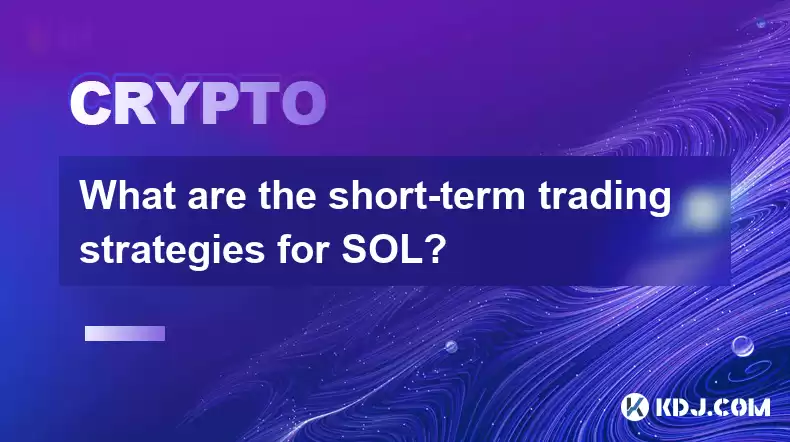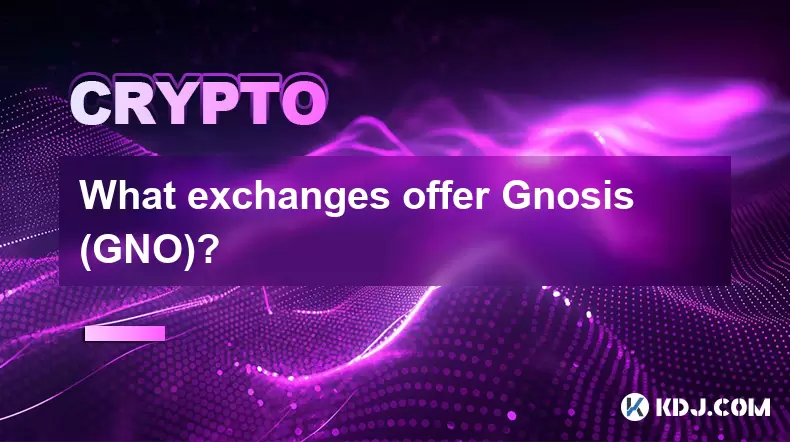-
 Bitcoin
Bitcoin $119700
0.53% -
 Ethereum
Ethereum $4508
5.39% -
 XRP
XRP $3.270
2.86% -
 Tether USDt
Tether USDt $1.000
0.00% -
 BNB
BNB $831.0
2.92% -
 Solana
Solana $189.6
6.89% -
 USDC
USDC $0.9999
-0.01% -
 Dogecoin
Dogecoin $0.2350
2.92% -
 TRON
TRON $0.3500
1.34% -
 Cardano
Cardano $0.8420
6.73% -
 Chainlink
Chainlink $23.26
8.42% -
 Hyperliquid
Hyperliquid $44.42
1.44% -
 Stellar
Stellar $0.4512
3.16% -
 Sui
Sui $3.895
5.15% -
 Bitcoin Cash
Bitcoin Cash $618.7
5.88% -
 Hedera
Hedera $0.2601
4.43% -
 Ethena USDe
Ethena USDe $1.001
0.01% -
 Avalanche
Avalanche $24.45
4.90% -
 Litecoin
Litecoin $128.1
5.41% -
 Toncoin
Toncoin $3.454
1.64% -
 UNUS SED LEO
UNUS SED LEO $9.065
0.44% -
 Shiba Inu
Shiba Inu $0.00001359
3.41% -
 Uniswap
Uniswap $11.42
1.78% -
 Polkadot
Polkadot $4.165
6.36% -
 Cronos
Cronos $0.1664
-0.50% -
 Ethena
Ethena $0.8108
1.79% -
 Dai
Dai $1.000
0.00% -
 Pepe
Pepe $0.00001213
5.22% -
 Bitget Token
Bitget Token $4.438
0.25% -
 Aave
Aave $313.3
5.02%
What are the short-term trading strategies for SOL?
Short-term Solana (SOL) trading uses technical analysis (RSI, MACD, chart patterns) for scalping, day trading, or swing trading, profiting from its volatility, but demanding active monitoring and risk management.
Mar 09, 2025 at 09:44 am

Key Points:
Understanding SOL's Volatility: Short-term SOL trading hinges on its inherent volatility. Successful strategies exploit these price swings.
Technical Analysis Dominates: Chart patterns, indicators like RSI and MACD, and support/resistance levels are crucial for identifying entry and exit points.
Scalping and Day Trading: These strategies focus on small, quick profits from minor price movements. Risk management is paramount.
Swing Trading: This approach capitalizes on slightly larger price swings, holding positions for a few hours to a few days.
News and Sentiment Analysis: Market-moving news and overall sentiment significantly impact SOL's price, creating short-term opportunities.
What are the short-term trading strategies for SOL?
Short-term trading strategies for Solana (SOL) aim to profit from rapid price fluctuations. Unlike long-term hodling, these strategies require active monitoring and a deep understanding of technical analysis. The high volatility of SOL makes it attractive for short-term traders, but also significantly increases the risk. Successful strategies depend on accurate prediction of these price swings.
Utilizing Technical Analysis for SOL Trading
Technical analysis is the cornerstone of successful short-term SOL trading. This involves studying price charts, identifying patterns, and using indicators to predict future price movements. Popular indicators include the Relative Strength Index (RSI), Moving Average Convergence Divergence (MACD), and various moving averages. Support and resistance levels, identified through past price action, are crucial for setting stop-loss and take-profit orders.
Identifying Support and Resistance: Analyze the chart to identify price levels where SOL has historically found support (price bounces) or resistance (price stalls).
Using Moving Averages: Observe the interaction of different moving averages (e.g., 50-day and 200-day) to identify potential trend reversals or confirmations of existing trends.
RSI and MACD Interpretation: Use RSI to gauge overbought or oversold conditions, suggesting potential price reversals. MACD helps identify momentum shifts and potential crossovers signaling trend changes.
Recognizing Chart Patterns: Learn to identify common chart patterns like head and shoulders, double tops/bottoms, flags, and pennants, which often precede significant price movements.
Scalping and Day Trading SOL
Scalping involves taking many small profits from tiny price fluctuations within minutes or hours. It requires quick reflexes, precise order execution, and a low tolerance for risk. Day trading focuses on holding positions for a single trading day, aiming for larger profits than scalping, but still requiring close monitoring. Both strategies rely heavily on technical analysis and quick decision-making.
Scalping: Requires high liquidity and low transaction fees. Use limit orders to enter and exit positions precisely.
Day Trading: Involves identifying short-term trends within a day, often using indicators and chart patterns. Requires discipline to stick to a trading plan.
Swing Trading SOL
Swing trading involves holding positions for a few hours to a few days, capturing slightly larger price swings than scalping or day trading. This strategy requires less intensive monitoring but still necessitates careful analysis. Swing traders typically use a combination of technical and fundamental analysis to identify potential entry and exit points.
Identifying Swing Highs and Lows: Identify potential swing highs and lows on the chart to determine entry and exit points.
Using Indicators to Confirm Trends: Employ indicators to confirm the direction of the swing and potential reversals.
Managing Risk: Set appropriate stop-loss orders to limit potential losses.
The Role of News and Sentiment in Short-Term SOL Trading
Market-moving news, such as protocol upgrades, partnerships, regulatory announcements, and overall market sentiment significantly impact SOL's price. Monitoring news sources and social media sentiment can provide valuable insights for short-term trading opportunities. However, it's crucial to distinguish between credible information and market noise.
News Analysis: Pay attention to announcements from the Solana Foundation, major exchanges, and other relevant sources.
Sentiment Analysis: Gauge the overall market sentiment towards SOL through social media monitoring and news articles.
Frequently Asked Questions (FAQs)
Q: How risky is short-term SOL trading?
A: Short-term SOL trading is inherently risky due to the cryptocurrency's volatility. Significant losses are possible if trades are not managed properly.
Q: What are the essential tools for short-term SOL trading?
A: Essential tools include a reliable cryptocurrency exchange, charting software with technical indicators, and a news aggregator for market updates.
Q: What is the best short-term strategy for SOL?
A: There's no single "best" strategy. The optimal approach depends on your risk tolerance, trading experience, and available time. Experimentation and adaptation are key.
Q: How can I manage risk effectively in short-term SOL trading?
A: Effective risk management involves setting stop-loss orders, diversifying your portfolio, and only investing capital you can afford to lose. Never invest more than you can comfortably afford to lose. Thorough research and a well-defined trading plan are crucial.
Q: Where can I learn more about technical analysis for SOL trading?
A: Many online resources offer courses and tutorials on technical analysis. Practicing on a demo account before trading with real funds is highly recommended.
Disclaimer:info@kdj.com
The information provided is not trading advice. kdj.com does not assume any responsibility for any investments made based on the information provided in this article. Cryptocurrencies are highly volatile and it is highly recommended that you invest with caution after thorough research!
If you believe that the content used on this website infringes your copyright, please contact us immediately (info@kdj.com) and we will delete it promptly.
- Unich's OTC Exchange: Surging with $1.2B Volume – What's the Hype?
- 2025-08-13 02:50:11
- MoonBull's Explosive Moves: Your Crypto Whitelist Ticket to Ride!
- 2025-08-13 02:30:11
- MAGACOIN Finance: Don't Miss the Presale Bonus!
- 2025-08-13 02:30:11
- Trump's Crypto Kingdom: $2.4 Billion and Counting
- 2025-08-13 02:50:11
- Solana, LSTs, and SEC Approval: A New Dawn for Crypto?
- 2025-08-13 02:55:12
- Bitcoin's Profit Surge: Unpacking the BTC Value Boom
- 2025-08-13 02:55:12
Related knowledge

How to purchase Aragon (ANT)?
Aug 09,2025 at 11:56pm
Understanding Aragon (ANT) and Its PurposeAragon (ANT) is a decentralized governance token that powers the Aragon Network, a platform built on the Eth...

Where to trade Band Protocol (BAND)?
Aug 10,2025 at 11:36pm
Understanding the Role of Private Keys in Cryptocurrency WalletsIn the world of cryptocurrency, a private key is one of the most critical components o...

What is the most secure way to buy Ocean Protocol (OCEAN)?
Aug 10,2025 at 01:01pm
Understanding Ocean Protocol (OCEAN) and Its EcosystemOcean Protocol (OCEAN) is a decentralized data exchange platform built on blockchain technology,...

How to invest in Kyber Network Crystal v2 (KNC)?
Aug 12,2025 at 05:21pm
Understanding Kyber Network Crystal v2 (KNC)Kyber Network is a decentralized liquidity hub built on the Ethereum blockchain that enables instant token...

Where can I buy UMA (UMA)?
Aug 07,2025 at 06:42pm
Understanding UMA and Its Role in Decentralized FinanceUMA (Universal Market Access) is an Ethereum-based decentralized finance (DeFi) protocol design...

What exchanges offer Gnosis (GNO)?
Aug 12,2025 at 12:42pm
Overview of Gnosis (GNO) and Its Role in the Crypto EcosystemGnosis (GNO) is a decentralized prediction market platform built on the Ethereum blockcha...

How to purchase Aragon (ANT)?
Aug 09,2025 at 11:56pm
Understanding Aragon (ANT) and Its PurposeAragon (ANT) is a decentralized governance token that powers the Aragon Network, a platform built on the Eth...

Where to trade Band Protocol (BAND)?
Aug 10,2025 at 11:36pm
Understanding the Role of Private Keys in Cryptocurrency WalletsIn the world of cryptocurrency, a private key is one of the most critical components o...

What is the most secure way to buy Ocean Protocol (OCEAN)?
Aug 10,2025 at 01:01pm
Understanding Ocean Protocol (OCEAN) and Its EcosystemOcean Protocol (OCEAN) is a decentralized data exchange platform built on blockchain technology,...

How to invest in Kyber Network Crystal v2 (KNC)?
Aug 12,2025 at 05:21pm
Understanding Kyber Network Crystal v2 (KNC)Kyber Network is a decentralized liquidity hub built on the Ethereum blockchain that enables instant token...

Where can I buy UMA (UMA)?
Aug 07,2025 at 06:42pm
Understanding UMA and Its Role in Decentralized FinanceUMA (Universal Market Access) is an Ethereum-based decentralized finance (DeFi) protocol design...

What exchanges offer Gnosis (GNO)?
Aug 12,2025 at 12:42pm
Overview of Gnosis (GNO) and Its Role in the Crypto EcosystemGnosis (GNO) is a decentralized prediction market platform built on the Ethereum blockcha...
See all articles

























































































